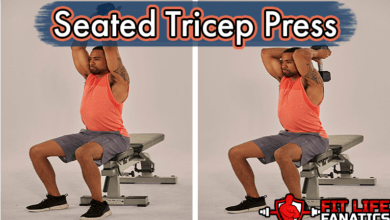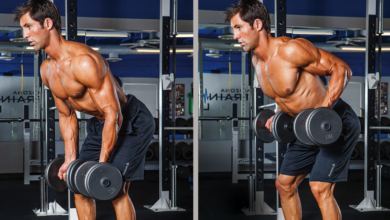Rear Delt Fly: How To (Video), Muscles Worked, Benefits, & Alternatives Exercises
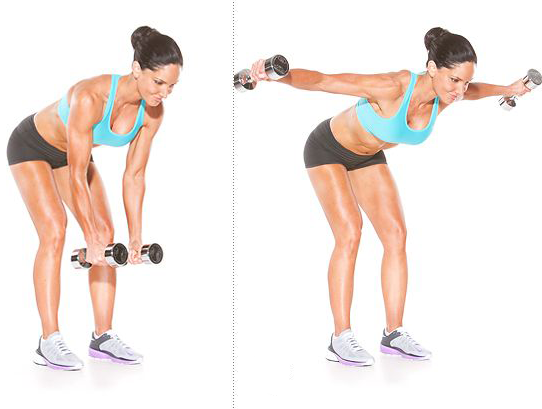
Article summary: This article covers the Rear Delt Fly exercise. Here you will learn:
- What the rear delt fly exercise is
- How to do a rear delt fly – step by step
- Muscles worked by the rear delt fly exercise
- Benefits of this exercise
- Alternative exercises
What Is The Rear Delt Fly Exercise
The rear delt fly exercise is a movement that was developed with the aim to work the rear muscles of your shoulder. This exercise is one that can be performed with both cables or dumbbells.
If you’re setting up your home gym and don’t have dumbbells yet, there are several cool places to find dumbbells. They come in all types, shapes, and sizes, budget dumbbells, more advanced ones, specific dumbbells for women, and adjustable models too for flexibility.
It’s all down to your preferences and budget.
How To Do The Rear Delt Fly Exercise Step-By-Step
Listed below is the step by step guide on how to perform the rear delt fly exercise
Step 1
Stand upright and hold two dumbbells, one in each hand.
Step 2
With a slight bend on your knees, lean forward to about a 90-degree angle.
Step 3
Stretch your arms downward, this is your initial position, then move both of your arms away from each other as far as you can and then go back to your initial position, simulating a flying movement, hence the name rear delt fly exercise.
Step 4
Repeat this pattern for the desired number for reps.
Pretty simple as you can see. And here is a visual illustration of this exercise
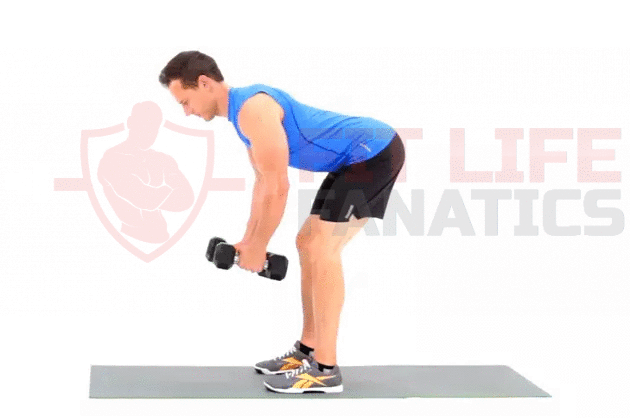
This exercise is ideally done in the form of 2 to 3 sets each with 8 to 12 reps; This means you repeat the pattern we mentioned 8 to 12 times – one set – then rest for about a minute to a minute and a half and then complete another set and so on until you’ve completed the required number of sets.
Muscles Worked By The Rear Delt Fly
1. Rear Delts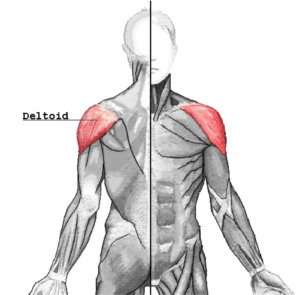
The main beneficiary muscle group of this exercise is your deltoid muscle -delts-, both the front and rear deltoids are responsible for forming the rounded contour in your shoulder.
Having them properly exercised and in shape helps with your body’s movement ability as well as the overall look of your upper body.
2. Traps
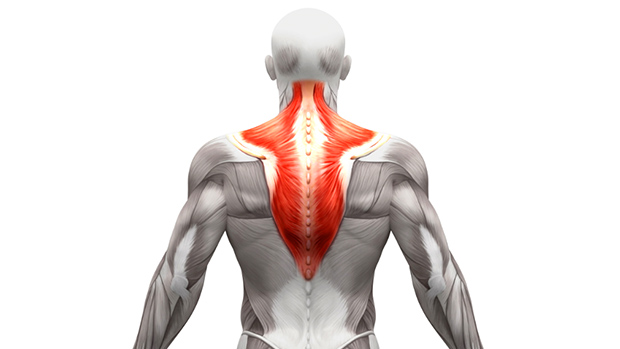
Traps, short for the trapezius muscle, is a muscle located in your back stretching from your neck downwards. Having a nice posture and a flexible body relies heavily on this muscle as it sits between your neck, shoulders, and head.
3. Arms
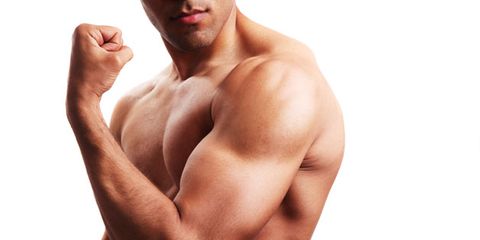
This makes for one of the best exercises that work your triceps and especially your biceps, when you lift the dumbbells against the force of gravity.
And of course, working your arms isn’t just beneficial for aesthetic purposes like putting on some muscles on those skinny arms, but also for practical purposes as you use your arms in most of your day-to-day activities and such fun duels like arm wrestling.
Other great exercises for the arms include the seated tricep press, dumbbell pullover, and the underhand dumbbell row.
4. Chest
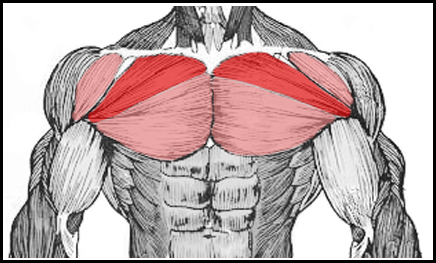
A secondary muscle that is indirectly worked from the dumbbell rear delt fly is your chest muscles. You use your chest muscle to stabilize your return repetition. If you are shooting to work your arms and chest, or chest and shoulders, or all three muscle groups, this could be just the exercise for you.
Another great exercise for the chest is the underhand front raise.
Benefits Of The Rear Delt Fly Exercise
Listed below are the benefits that the rear delt fly exercise can provide
Excellent Toning Exercise For A Back Workout Day
The dumbbell rear delt fly is phenomenal when it comes to working your upper back muscles; as it is easy to perform and greatly impacts your upper back and several upper body muscles alike.
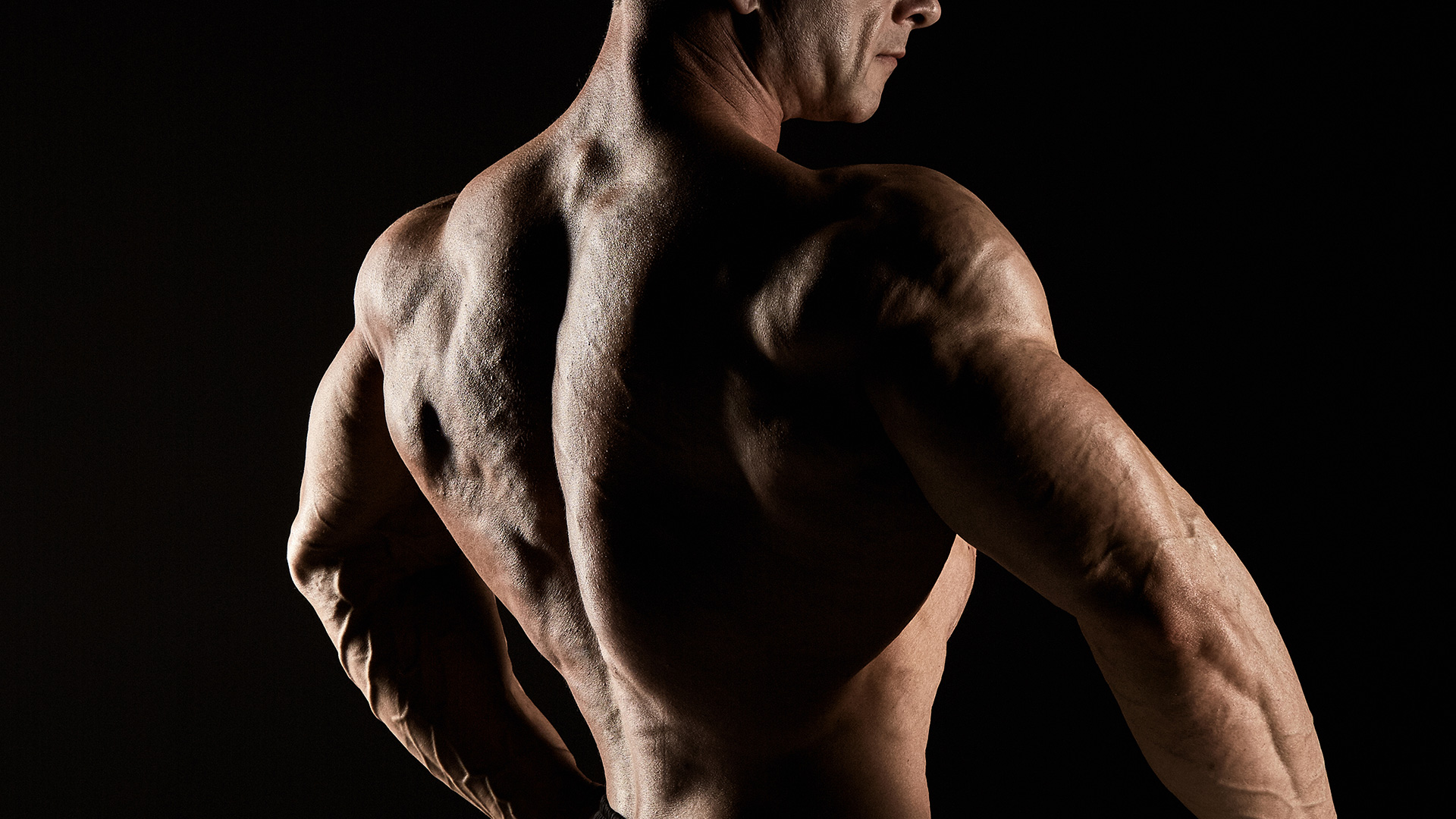
It Greatly Helps With Your Posture
The modern way of living has impacted our physical health and physical appearance immensely; being in a seated position in an office for most of the day has a really negative effect on different areas of our body but specifically the areas impacting our posture.
Rear dealt flies are among the best shoulder exercises that target those areas and helps fix poor posture: it targets the spine, the traps, and shoulder muscle groups.
Adding the dumbbell rear delt fly to your shoulder day workout routine greatly helps in reversing the bad side effects that come with the modern way of life and restores a proper form.
Other excellent alternative exercises that you can do to get better posture and proper form include the dumbbell floor press, double crunches, and the T bar row.
Stronger Shoulders
Your shoulder muscles, specifically the outer and most wide part of your delts, are the primary target of the dumbbell rear delt fly workout. The wideness that you see in ripped guys’ upper back has a lot to do with the rear deltoids.
Use rear delt flys as a way to not only strengthen both your front and rear shoulders but also to create the image of a wide v taper.
Improve Physical Appearance
Let’s not kid ourselves, other than the health and psychological benefits that come from consistent training and exercise the main reason we are working out is to look good. I mean it is most certainly the reason I am working out.
As I said above, do you want that ripped wide v-tapped look? This exercise will help you get there.
This exercise is also excellent for toning up the muscles in your upper back to create a chiseled grainy look.
Rear Delt Fly Variations
Here are the variations that you can perform of the traditional rear delt fly to target different areas of your shoulder and upper back
One-Arm Rear Delt Fly
One arm dumbbell rear delt fly is just as the name implies: a rear delt fly exercise performed with one hand instead of two.
Steps to Follow for a One-Arm Rear Delt Fly Exercise
- Starting position is pretty much the same as in the regular rear delt fly steps above. You stand with your feet shoulder-width apart, knees slightly bent, and hold one dumbbell instead of two.
- Proceed to hinge at the waist, just like regular.
- Do a slight bend forward, at about a 45° angle. Keep your back as straightened as possible.
- Begin the exercise by lifting your arm outwards to the side. Your elbow just slightly bent.
- Retract to slowly return to the starting position and repeat for as many reps as necessary. Switch hands if you please.
Recommended reps stay the same at 10 reps for 3 sets. An adjustable is recommended as you can easily turn it up as you outgrow the lighter weight and need more weight
Bent Arm Lateral Raise
The bent arm lateral raise, unlike the regular rear delt fly, is performed in a standing position. Below are the steps to follow for a perfect bent arm lateral raise:
Step 1
Enter in a regular standing position.
Step 2
Bend your elbows in a 90-degree position. Hold the dumbbells with your palms facing inwards.
Step 3
With your elbows already held 90 degrees outwards, contract your shoulders out and back while keeping your arms at the same height as your shoulders.
Step 4
Once the dumbbells are at the perfect height, retract them inwards again to the starting position.
Step 5
Repeat the same motion for as many reps as you deem appropriate.
Rear Delt Fly Alternative Exercise
Now we are going to be discussing a rear delt fly exercise alternative that targets your shoulders and chest more effectively, the cable rear delt row exercise.
As the name suggests you are going to need a cable gym machine, a lat pulldown machine, or a power rack with lat pulldown to perform this exercise and to follow the steps we mention below.
Cable Rear Delt Row Exercise Step-By-Step
Listed below is the step-by-step guide on how to perform the rear delt fly alternative exercise, the cable rear delt row.
Step 1
Adjust the weights on the cable machine to your desired weight. Attach a rope attachment and adjust the rope’s height to be at slightly above your shoulder’s height.
Step 2
Stand back from the machine and hold both ends of the rope with your hands.
Step 3
Pull the rope towards your chest until your hands meet the upper part of your chest.
Step 4
This is the movement pattern you should follow, Repeat it for the desired number of reps
Video Illustration Of The Cable Rear Delt Row Exercise
Ideally, you should perform this exercise in the form of 2 to 3 sets each with 8 to 12 reps
Common Rear Delt Fly Exercise Mistakes
Here are the most common mistakes that beginners tend to make when performing this exercise. Here are several fitness tips to help you avoid such costly mistakes
Arm Positioning
The ideal positioning for your arms should be lateral to your shoulders and not diagonal. Start with a lightweight until you can master the form correctly.
Too Much Weight
Some beginners tend to make the mistake of using heavier dumbbells than they can handle in hopes of achieving faster results or because they are ego-lifting. Doing this actually results in the complete opposite – no results at all.
This is because when you try and use heavy weights that prevent you from using the correct form you tend to to do partial reps instead of complete ones. Know that using the correct form is more important than trying to start off lifting as much weight as you can.
Arm Angle
The last mistake we’ll discuss is the arm angle alteration. It is not uncommon for lifters in a rear delt fly to bend in their elbows or arms too heavily while performing the exercise.
While you want your arms slightly bent doing it too much can completely alter the exercise and turn it into a different workout entirely.
Pay close attention to that, and then make sure to bring your arms up and slowly lower them for max gains. The need for correct form holds true when doing other rear deltoids and back muscles workouts, from strength training workouts to isometric hold exercises, like dumbbell reverse fly, barbell bench press, chest press, rear delt raise on a rear delt machine.
Related Readings;
- Smith Machine Deadlift
- Why Do I Bench More Than I Squat?
- Upper Lats Vs Lower Lats
- Should I Squat and Bench on the Same Day or Should I Do Them on Separate Days?
- Neutral Grip Pullups
- Is Training Shoulders After Chest Day Beneficial OR Overtraining?
Sources:
- https://www.popsugar.com/fitness/photo-gallery/44694336/image/44694590/Rear-Delt-Fly
- https://www.livestrong.com/article/538295-how-to-do-a-dumbbell-rear-delt-fly/
Ben Mayz
Hi there! I'm Ben, main author and chief editor at Fitlifefanatics.com. I have been obsessed with Strength Training and Fitness for 18 years now.
My passion for living a happy fit lifestyle is what made me realize that fitness is what I wanted for my future.
I went on to earn my Masters in Sports Training & Biomechanics.
My passion for Strength training & fitness and my love of helping others is what made me start Fitlifefanatics.
Here, myself, and a team of specialist aim to provide the most accurate, and actionable information possible in hopes to help foster the fitness community forward.
You can learn more about Fitlifefanatics on our About Page



